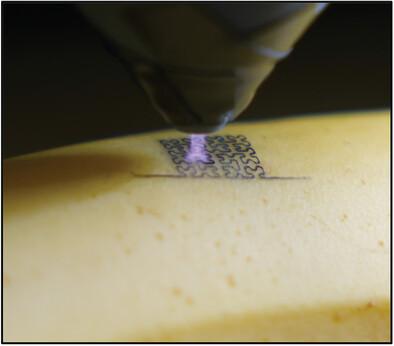IF 13
2区 材料科学
Q1 CHEMISTRY, MULTIDISCIPLINARY
引用次数: 0
摘要
金属材料的增材制造有望彻底改变传统方法无法实现的功能性设备的制造。尽管最近取得了一些进展,但打印金属材料通常需要在高温下进行热处理,以形成具有所需特性的致密结构,这对直接打印和与温度敏感材料的集成提出了重大挑战。本文报告了一种独特的协同喷射打印(CJP)方法,该方法集成了气溶胶喷射和非热、常压等离子喷射,可同时实现金属纳米粒子油墨的气溶胶沉积和环境温度下的原位烧结。机器学习算法与 CJP 集成,可进行实时缺陷检测和自主校正,从而将高导电率印刷薄膜的产量从 44% 提高到 94%。印刷和烧结同时进行,无需进行印刷后处理,可根据产品尺寸将整体制造时间缩短数倍。CJP 能够在包括生物材料在内的各种温度敏感材料上直接打印功能器件。在活体植物叶片上直接打印水合传感器,可用于长时间监测植物的水合水平。多功能的 CJP 方法为可穿戴/可植入设备和生物混合系统的新兴应用提供了和谐整合非生物和生物材料的巨大机会。本文章由计算机程序翻译,如有差异,请以英文原文为准。

Autonomous Aerosol and Plasma Co-Jet Printing of Metallic Devices at Ambient Temperature
Additive manufacturing of metallic materials holds the potential to revolutionize the fabrication of functional devices unattainable via traditional methods. Despite recent advancements, printing metallic materials typically requires thermal processing at elevated temperatures to form dense structures with desired properties, which presents a major challenge for direct printing and integration with temperature-sensitive materials. Herein, a unique co-jet printing (CJP) method is reported integrating an aerosol jet and a non-thermal, atmospheric pressure plasma jet to enable concurrent aerosol deposition of metal nanoparticle inks and in situ sintering at ambient temperature. A machine learning algorithm is integrated with the CJP to perform real-time defect detection and autonomous correction, enhancing the yield of printed films with high electrical conductivity from 44% to 94%. Concurrent printing and sintering eliminate the need for post-printing processing, reducing the overall manufacturing time by multiple folds depending on product size. CJP enables direct printing of functional devices on a variety of temperature-sensitive materials including biological materials. Direct printing of hydration sensors on living plant leaves is demonstrated for long-duration monitoring of hydration level in the plant. The versatile CJP method opens tremendous opportunities to harmoniously integrate abiotic and biotic materials for emerging applications in wearable/implantable devices and biohybrid systems.
求助全文
通过发布文献求助,成功后即可免费获取论文全文。
去求助
来源期刊

Small
工程技术-材料科学:综合
CiteScore
17.70
自引率
3.80%
发文量
1830
审稿时长
2.1 months
期刊介绍:
Small serves as an exceptional platform for both experimental and theoretical studies in fundamental and applied interdisciplinary research at the nano- and microscale. The journal offers a compelling mix of peer-reviewed Research Articles, Reviews, Perspectives, and Comments.
With a remarkable 2022 Journal Impact Factor of 13.3 (Journal Citation Reports from Clarivate Analytics, 2023), Small remains among the top multidisciplinary journals, covering a wide range of topics at the interface of materials science, chemistry, physics, engineering, medicine, and biology.
Small's readership includes biochemists, biologists, biomedical scientists, chemists, engineers, information technologists, materials scientists, physicists, and theoreticians alike.
 求助内容:
求助内容: 应助结果提醒方式:
应助结果提醒方式:


